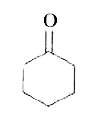Assertion The dC−O in bridging carbonyl geroup is longer than that of terminal carbonyl group
Reason With increase in extent of synergic bonding the C−O bond length increases .
If both (A) and (R) are correct and (R) is the correct explanation of (A) .
If both (A) and (R) are correct and (R) is the correct explanation of (A) .
If(A) is correct, but (R) is incorrect .
Both (A) and (R) are incorrect .
The correct Answer is:A
To solve the question regarding the assertion and reason about the bond lengths in bridging and terminal carbonyl groups, we can break it down into a step-by-step analysis.
Step 1: Understand the Assertion
- The assertion states that the C−O bond length in a bridging carbonyl group is longer than that in a terminal carbonyl group.
- Hint: Recall the definitions of bridging and terminal carbonyl groups. Bridging carbonyls connect two metal centers, while terminal carbonyls are bonded to only one metal center.
Step 2: Analyze the Reason
- The reason provided states that with an increase in the extent of synergic bonding, the C−O bond length increases.
- Hint: Consider what synergic bonding entails. It involves both sigma and pi bonding interactions between the metal and the carbonyl group.
Step 3: Explore Bonding in Carbonyl Groups
- In carbonyl complexes, the carbonyl group can participate in two types of bonding: sigma (σ) and pi (π) bonds.
- In terminal carbonyls, the carbonyl group typically forms a stronger bond with the metal due to the presence of only one metal center.
- Hint: Think about how the number of metal centers involved might affect the bond strength and length.
Step 4: Compare Bond Lengths
- In bridging carbonyls, the C−O bond is influenced by two metal centers, which can lead to a decrease in bond strength due to increased electron delocalization and shared bonding.
- This results in a longer C−O bond in bridging carbonyls compared to terminal carbonyls.
- Hint: Remember the relationship between bond strength and bond length: stronger bonds are typically shorter.
Step 5: Conclusion on Assertion and Reason
- Both the assertion and reason are correct. The assertion correctly states that the C−O bond length in bridging carbonyls is longer than in terminal carbonyls, and the reason correctly explains this phenomenon through the concept of synergic bonding.
- Hint: Consider how the explanation connects the two statements logically.
Final Conclusion:
- Therefore, the correct answer is that both the assertion and reason are true, and the reason is the correct explanation for the assertion.
- The assertion states that the C−O bond length in a bridging carbonyl group is longer than that in a terminal carbonyl group.
- Hint: Recall the definitions of bridging and terminal carbonyl groups. Bridging carbonyls connect two metal centers, while terminal carbonyls are bonded to only one metal center.
- The reason provided states that with an increase in the extent of synergic bonding, the C−O bond length increases.
- Hint: Consider what synergic bonding entails. It involves both sigma and pi bonding interactions between the metal and the carbonyl group.
- In carbonyl complexes, the carbonyl group can participate in two types of bonding: sigma (σ) and pi (π) bonds.
- In terminal carbonyls, the carbonyl group typically forms a stronger bond with the metal due to the presence of only one metal center.
- Hint: Think about how the number of metal centers involved might affect the bond strength and length.
- In bridging carbonyls, the C−O bond is influenced by two metal centers, which can lead to a decrease in bond strength due to increased electron delocalization and shared bonding.
- This results in a longer C−O bond in bridging carbonyls compared to terminal carbonyls.
- Hint: Remember the relationship between bond strength and bond length: stronger bonds are typically shorter.
- Both the assertion and reason are correct. The assertion correctly states that the C−O bond length in bridging carbonyls is longer than in terminal carbonyls, and the reason correctly explains this phenomenon through the concept of synergic bonding.
- Hint: Consider how the explanation connects the two statements logically.
- Therefore, the correct answer is that both the assertion and reason are true, and the reason is the correct explanation for the assertion.
Topper's Solved these Questions
- COORDINATION COMPOUNDSBOOK - CENGAGE CHEMISTRY ENGLISHCHAPTER - COORDINATION COMPOUNDSEXERCISE - Exercises Integer (Naming And Terminology)
16 Videos
- COORDINATION COMPOUNDSBOOK - CENGAGE CHEMISTRY ENGLISHCHAPTER - COORDINATION COMPOUNDSEXERCISE - Exercises Integer (Isomerism)
15 Videos
- COORDINATION COMPOUNDSBOOK - CENGAGE CHEMISTRY ENGLISHCHAPTER - COORDINATION COMPOUNDSEXERCISE - Exercises Single Correct (Application Of Coordination Compounds And Miscellaneous)
28 Videos
- CHEMICAL KINETICSBOOK - CENGAGE CHEMISTRY ENGLISHCHAPTER - CHEMICAL KINETICSEXERCISE - Archives Subjective
23 Videos
- D AND F BLOCK ELEMENTSBOOK - CENGAGE CHEMISTRY ENGLISHCHAPTER - D AND F BLOCK ELEMENTSEXERCISE - Archives Subjective
29 Videos
Similar Questions
Knowledge Check
Which of the following have larger C-O bond length than C-O bond length of
 A
A B
B C
C D
D
The correct order in which the O-O bond length increases in the following is
View SolutionIn P4O10 molecule, bridging P - O bond length is
View SolutionIn which complex C-O bond length is maximum ?
View SolutionIn which complex C-O bond length is maximum ?
View SolutionShortest C-O bond is present in
View SolutionAssertion : C - O bond in metal carbonyl is long.
Reason : There is delocalisation of electrons from filled d orbitals into the empty orbitals on the CO ligands.
View SolutionWhy is C−C bond length in graphite shorter than in C−C bond length in diamond?
View Solution
